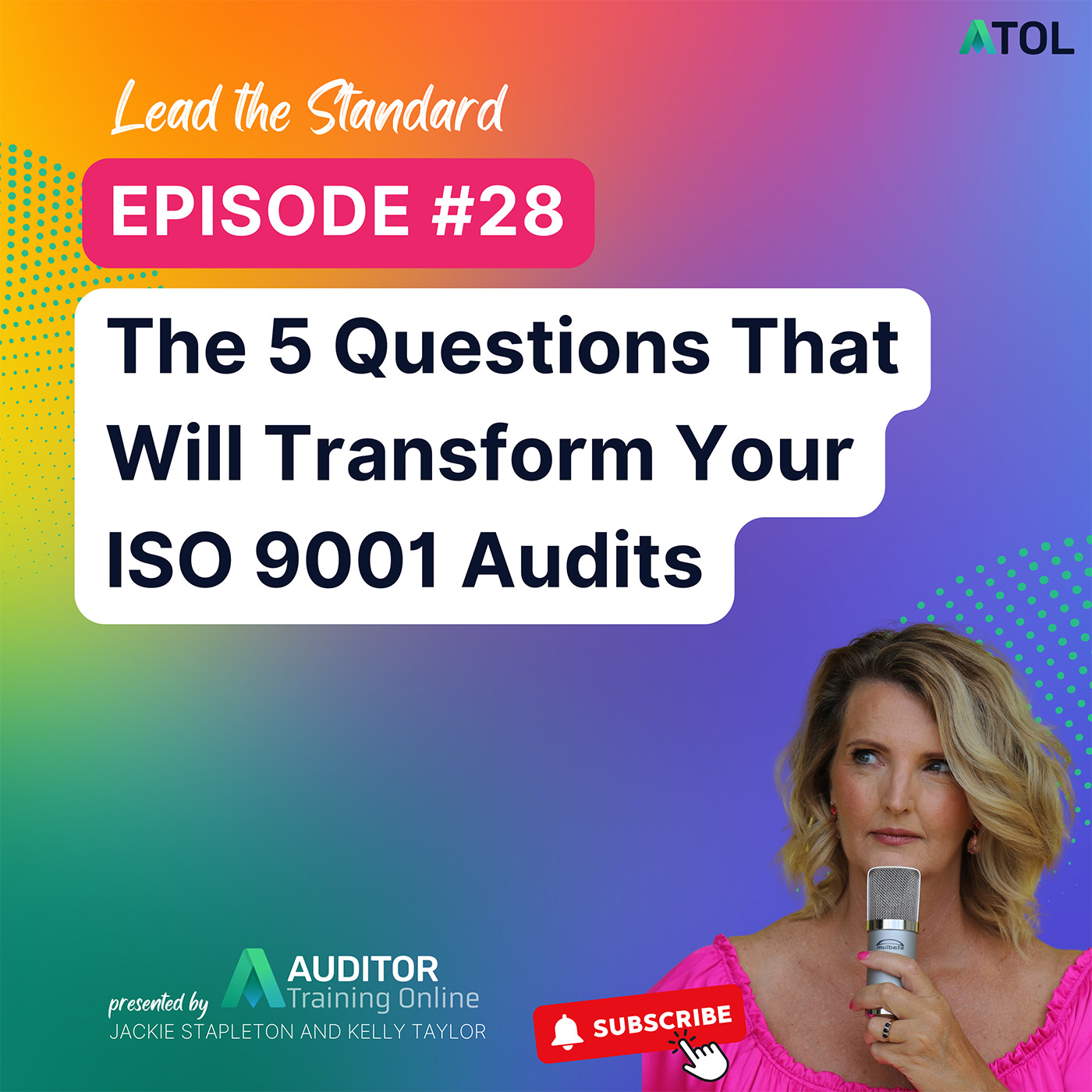The 5 Questions That Will Transform Your ISO 9001 Audits
Auditing • 12 November 2024 12:00:00 AM • Author: Jackie Stapleton

Quality management is my passion, but let's face it - auditing against ISO 9001 often seems more complicated than it needs to be. As auditors, our challenge is to bridge the gap between rigid standards and the dynamic realities of business operations. And the stakes are high:
- According to the International Organization for Standardization (ISO), over 1 million organizations worldwide are certified to ISO 9001.
- Yet, a survey by Quality Progress found that 36% of quality professionals believe their ISO 9001 implementation has not led to significant improvements in product/service quality.
- Moreover, a study in the TQM Journal revealed that 40% of organizations struggle to maintain their quality management systems after certification.
These statistics underscore a crucial point: while ISO 9001 certification is widespread, many organizations are not realizing its full potential. The question is: why?
The key, I believe, lies in how we approach the audit process. Speaking the client's language is crucial. Rattling off clause numbers and technical jargon rarely resonates with those on the frontlines of quality management. Instead, what truly matters are the tangible aspects of their business - the day-to-day activities, products, and services that form the backbone of their quality management system.
So, how can we conduct an ISO 9001 audit that's both comprehensive and meaningful to the client? Let's explore three distinct approaches:
- The Traditional Method: Following clauses step by step
- The Operational Approach: Mapping to business processes
- The Strategic Perspective: Adopting a risk-based approach
Each method has its merits, but which one truly aligns with modern business needs? Or is there perhaps a more effective hybrid solution?
While each of these approaches has its strengths (admittedly, the traditional method less so), I believe the most effective strategy lies in combining elements of the operational and strategic perspectives. By merging the process-based approach with risk assessment, we can create a more holistic and valuable audit experience. Let's explore how this hybrid method can transform the way we conduct ISO 9001 audits, making them not just a conformance exercise, but a driver of real business improvement.
This combined approach is like decluttering a home. We're not counting every item or checking every drawer, but assessing how each room (or process) serves its purpose and contributes to the overall functionality. This simplified, streamlined approach allows us to see the 'lived-in' quality system more clearly, revealing its true character and effectiveness.

A Fresh Approach to Quality Audits
When we combine the operational and risk-based approaches to ISO 9001 audits, we create a powerful tool for understanding and improving an organization's quality management system. To put this into practice, I've developed a model that guides us through the key stages of the quality process, centred around five essential questions:

This model isn't just about ticking boxes or following a rigid structure. Instead, it's designed to spark meaningful conversations and uncover real insights about how an organization manages quality. Let's break it down:
- Requirements Gathering: "How do you figure out what your customers really need?" This question gets to the heart of customer focus, encouraging organizations to think deeply about their methods for understanding and interpreting customer requirements.
- Planning & Resource Allocation: "What steps do you take to make sure you can deliver on these needs?" Here, we're looking at how the organization prepares itself to meet customer expectations, from resource planning to risk assessment.
- Monitoring & Control: "How do you keep tabs on progress throughout the process?" This question addresses the crucial aspect of ongoing quality control and the ability to make timely adjustments.
- Delivery: "What tells you that you've delivered what was promised?" This prompts a discussion about how the organization verifies that its outputs meet the agreed specifications.
- Post-Delivery Evaluation: "How do you gauge customer satisfaction after delivery?" Finally, we look at how the organization closes the loop, gathering and acting on customer feedback to drive continuous improvement.
By structuring our audit around these questions, we create a comprehensive yet flexible framework that adapts to each organization's unique context. This approach allows us to conduct thorough audits that not only ensure compliance with ISO 9001 but also add real value to the organization's quality management system.
/9001%20Lead-2.jpg?width=700&name=9001%20Lead-2.jpg)
Lead Auditor Quality Management Systems
AU$1,895.00This course prepares participants to become internationally recognized Quality Management Systems Lead Auditors. It focuses on conducting successful external audits against ISO 9001:2015 requirements across all industries worldwide. This comprehensive training includes understanding audit processes, addressing quality nonconformances, and enhancing organizational quality management systems. It's structured around key modules and includes the ATOL Extended Learning Program for a thorough learning experience.
Next Steps to transforming your approach to ISO 9001 audits
Now that we've explored this transformative approach to ISO 9001 audits, you might be wondering, "Where do I go from here?" Here are three concrete steps you can take to start revolutionizing your audit process:
- Reframe Your Audit Questions Take our five key questions and adapt them to your specific industry and organization. Spend some time thinking about how you can phrase these questions in a way that resonates with your team and clients. Remember, the goal is to spark meaningful conversations about quality, not to tick boxes.
- Map Your Processes Before your next audit, create a visual map of your organization's core processes. This doesn't need to be complex - even a simple flowchart can be incredibly revealing. Use this map to identify key points where our five questions can be applied most effectively.
- Conduct a 'Trial Run' Choose a small part of your organization or a single process to test this new approach. Use our five questions to guide a mini-audit and pay attention to the kinds of insights and discussions that emerge. This trial run will help you refine your approach and build confidence before applying it to a full ISO 9001 audit.
Remember, transforming your audit process won't happen overnight. It's about shifting mindsets as much as changing methods. But by taking these steps, you'll be well on your way to conducting ISO 9001 audits that not only ensure compliance but drive real, meaningful improvements in your organization's quality management system.


